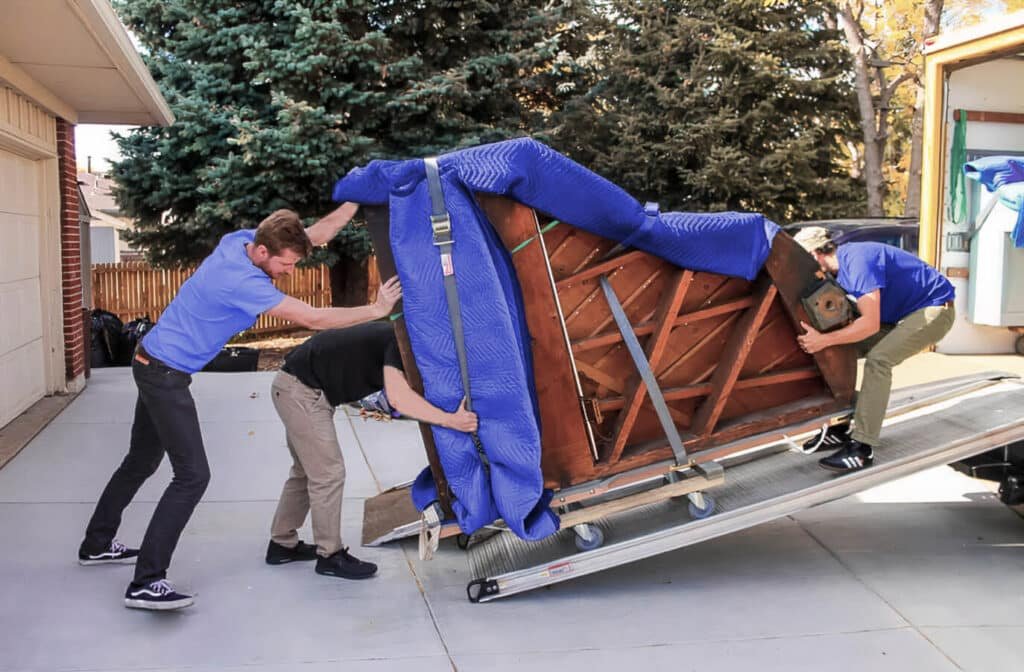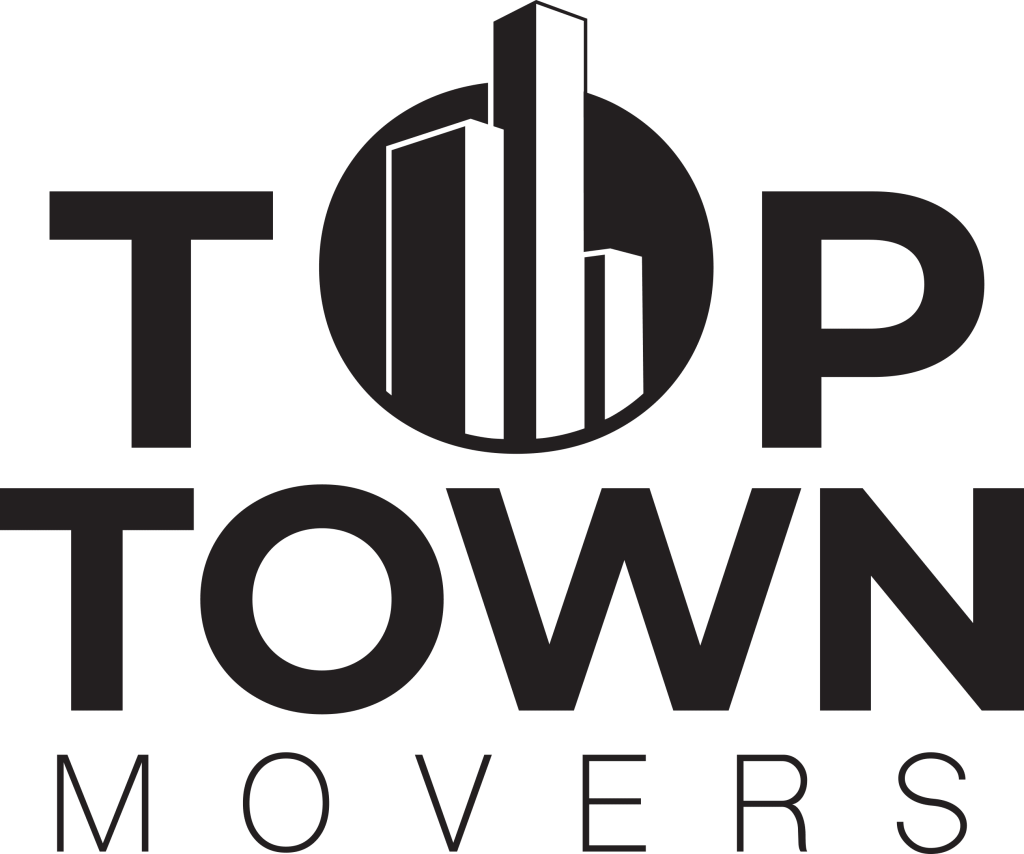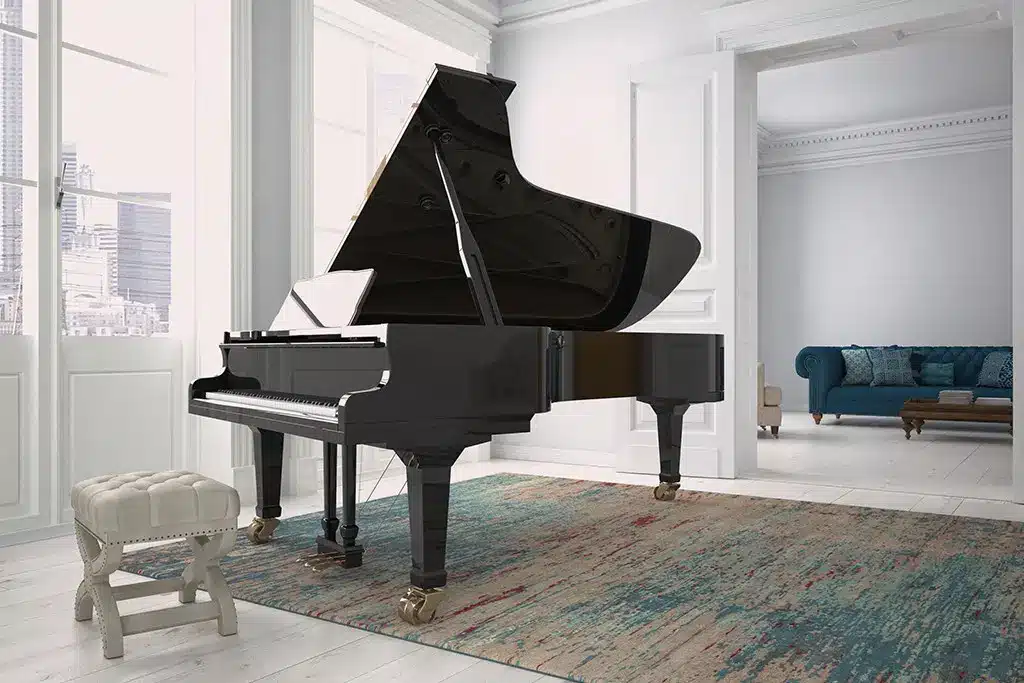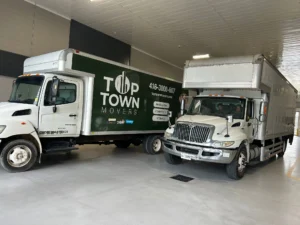Moving a piano is a task that strikes fear into the hearts of many, and for good reason. Unlike typical furniture, a piano is an intricate, heavy, and incredibly delicate musical instrument that demands specialized knowledge, precise technique, and robust equipment to move safely. Whether it’s a towering upright, a graceful grand, or a compact digital piano, improper handling can lead to severe personal injury, irreparable damage to the instrument, or significant damage to your home.
This comprehensive guide will walk you through the complexities of piano moving, explaining the critical steps involved and highlighting the substantial risks of a DIY approach. Ultimately, we’ll demonstrate why entrusting your valuable instrument to professionals like Top Town Movers, a leading moving service in Ontario and the North York area, is not just a convenience, but a necessit
- Learn More >>>> How much to move a piano in Toronto?
A Comprehensive Guide to Safe Relocation
The Anatomy of a Piano: Why They’re So Challenging to Move
To understand how to move a piano, it’s crucial to understand what a piano is. It’s not just a wooden box; it’s a marvel of engineering:
- Immense Weight: Pianos are deceptively heavy.
- Spinet/Console Pianos: 300-400 lbs
- Studio/Upright Pianos: 400-800 lbs
- Baby Grand Pianos: 500-700 lbs
- Grand Pianos (Concert Grands): 800-1,200+ lbs This weight is concentrated and unevenly distributed, making them difficult to lift and balance.
- Delicate Internal Mechanisms: Inside the heavy case are thousands of intricate parts – strings under immense tension (up to 20 tons for a grand piano), hammers, dampers, and the soundboard. A jarring impact, a sudden tilt, or even excessive vibration can knock these components out of alignment, break strings, or crack the soundboard, leading to costly repairs and affecting the piano’s tone.
- Fragile Exterior Finish: Pianos often feature beautiful, highly polished wood finishes that are susceptible to scratches, dents, and chips from even slight bumps.
- Awkward Shape & Size: Their bulky, often irregular shapes make them difficult to maneuver through narrow doorways, around tight corners, and especially up or down stairs.
- Sentimental Value: Beyond monetary worth, pianos often hold deep sentimental value, having been passed down through generations or representing a significant personal investment in music.
- Learn More >>>>piano moving aurora
The Risks of DIY Piano Moving: Why It’s Rarely a Good Idea
Given the complexities, attempting to move a piano yourself, even with a few strong friends, carries significant risks:
- Personal Injury: This is the primary concern. Back injuries, strained muscles, crushed fingers or toes, and even fractures are common when untrained individuals attempt to lift and carry such heavy, awkward objects. The risk of falls, especially on stairs, is extremely high.
- Damage to the Piano: This is almost inevitable with a DIY move. Scratches, dents, chipped finishes, broken legs (especially on grand pianos), internal mechanism damage (e.g., broken hammers, loose pins, cracked soundboard), or severe de-tuning are highly probable outcomes. The cost of these repairs can quickly exceed the cost of professional moving.
- Property Damage: Your home is also at risk. Scraped walls, gouged floors, broken door frames, damaged banisters, or even structural damage to stairs are common consequences of a piano move gone wrong.
- No Insurance Coverage: Your standard homeowner’s insurance policy typically does not cover damage to your belongings if they are moved by you or uninsured individuals. Professional movers, like Top Town Movers, carry specialized liability insurance that protects your piano during transit.
- Voided Warranty: Many piano manufacturers’ warranties specifically state that the warranty is void if the instrument is not moved by a professional, certified piano mover.

- Learn More >>>>piano moving in Burlington
How Professional Piano Moving is Done: The Top Town Movers Process
Professional piano moving is a highly specialized skill that requires meticulous planning, the right equipment, and experienced personnel. Here’s a detailed look at how Top Town Movers approaches a piano relocation:
Step 1: Initial Assessment and Planning
- Piano Type and Size: We identify whether it’s an upright (spinet, console, studio, full-size) or a grand piano (baby grand, medium grand, concert grand). Dimensions and weight are key factors.
- Access Points: This is crucial. We assess:
- Origin: Doorway widths, hallway clearances, number of stairs, turns in staircases, floor surfaces (hardwood, carpet, tile), and exterior access (slopes, steps, gates).
- Destination: Similar factors as the origin.
- Elevator Access: For high-rises in Toronto or other GTA cities, we confirm elevator dimensions, weight limits, and service elevator booking procedures.
- Obstacle Identification: We identify any potential obstacles like tight corners, low ceilings, narrow landings, or unique architectural features.
- Team and Equipment Allocation: Based on the assessment, we determine the optimal number of movers (typically 2-4 for an upright, 3-6 for a grand), and the specific equipment required.
Step 2: Specialized Equipment – The Essentials
Top Town Movers invests in and utilizes purpose-built equipment designed specifically for piano safety:
- Piano Dollies: These are heavy-duty, low-profile dollies with sturdy wheels (often non-marring) and padding. They are designed to support the immense weight of a piano evenly.
- Piano Skids/Boards (Grand Piano Boards): These are long, padded wooden or composite boards used to secure grand pianos on their side for transport. The piano is carefully tilted onto the skid and strapped securely.
- Moving Blankets & Pads: Thick, quilted, industrial-grade moving blankets provide critical padding against scratches, dents, and impacts. Multiple layers are often used.
- Heavy-Duty Straps & Wraps: Robust nylon or polyester straps, along with industrial-strength shrink wrap, are used to secure the piano to the dolly/skid and within the truck, preventing any movement during transit.
- Forearm Forklifts/Shoulder Straps: Ergonomic lifting harnesses that distribute weight more evenly across the movers’ bodies, reducing strain and improving control.
- Stair Climbers/Specialized Dollies: For multi-flight stairs, specialized stair-climbing dollies with tracks or advanced leverage systems are used, minimizing the risk of slips or drops.
- Tool Kits: For grand pianos, specialized tools are needed to carefully remove and reattach legs and the pedal lyre.
Step 3: Meticulous Preparation and Packing
This is where the true art of piano moving begins:
- Keyboard Protection: The keyboard lid is gently closed and secured with tape or a soft strap to prevent it from opening during the move and damaging the keys.
- Pedal Protection: For uprights, the pedals are often wrapped. For grand pianos, the entire pedal lyre assembly is typically removed.
- Leg Removal (Grand Pianos Only): The legs of a grand piano are usually removed for transport, as they are fragile and susceptible to snapping. This is done with extreme care while the piano is supported. The legs are then individually wrapped and packed.
- Full Padding and Wrapping: The entire piano is enveloped in several layers of thick moving blankets. These are secured tightly with durable shrink wrap and packing tape, creating a protective cocoon around the instrument’s delicate finish and sensitive components. Corner protectors may also be used.
- Securing to Skid (Grand Pianos): Once wrapped, the grand piano is carefully tilted onto its side onto the specialized piano skid. It is then securely strapped to the skid to become one stable unit.
- Learn More >>>>How heavy is an upright piano?
Step 4: Precise Maneuvering and Loading
This is the most physically demanding and skilled part of the move:
- Teamwork and Communication: Movers work in perfect synchronization, constantly communicating “up,” “down,” “left,” “right,” “clear,” etc.
- Controlled Movement: The piano, now a protected unit on its dolly or skid, is carefully maneuvered through doorways, hallways, and around corners. Every step is precise and controlled, avoiding bumps or scrapes.
- Stair Navigation: Moving a piano up or down stairs is exceptionally challenging.
- For uprights, specialized stair dollies are often used, or a team of movers carefully carries the piano (using straps/harnesses) with one person at the bottom guiding and supporting, and others at the top pulling.
- For grand pianos (on their skids), a ramp may be used, or a highly trained team carefully slides it down with multiple movers controlling its descent. This often involves specific leverage techniques.
- Loading onto the Truck: A heavy-duty ramp is used, or a lift gate (if available on the truck) to gently guide the piano onto the truck.
Step 5: Secure Transportation
- Air-Ride Suspension Trucks: Top Town Movers utilizes trucks equipped with air-ride suspension. This technology minimizes vibrations and shocks from the road, providing a much smoother ride and superior protection for delicate items like pianos, especially important for longer distances within Ontario.
- Strategic Placement and Securing: Inside the truck, the piano is positioned strategically, often against a sturdy wall. It is then secured firmly with multiple heavy-duty straps to anchor points, preventing any shifting or movement during transit, even over bumps or during sudden stops. Additional padding may be placed around it.
Step 6: Unloading and Placement at Destination
- Reverse Process: The unloading process mirrors the loading, executed with the same precision and care.
- Final Placement: The piano is carefully maneuvered into its designated spot in your new home.
- Unpacking and Reassembly: Once in place, our team carefully unwraps the piano. For grand pianos, the legs and pedal lyre are skillfully reattached, and the piano is returned to its playable position.
- Learn More >>>>Is it worth it to move a piano?
Why Top Town Movers is Your Definitive Choice for Piano Moving
Given the intricate nature and high stakes involved in piano moving, attempting it yourself is a false economy. Choosing a professional piano mover is an investment in safety, protection, and peace of mind. Top Town Movers stands out for several reasons:
- Specialized Expertise: We are not just general movers; we have dedicated teams trained specifically in piano relocation techniques. This specialized knowledge is invaluable.
- Purpose-Built Equipment: We own and utilize all the necessary, high-quality, specialized equipment for safe piano handling, from dollies to air-ride trucks.
- Experienced and Insured Team: Our movers are highly trained, background-checked, and fully insured. This means your piano is covered against unforeseen circumstances.
- Local Knowledge: As a prominent moving company in North York and across Ontario, we have intimate knowledge of the region’s geography, traffic patterns, and building types, allowing for efficient and safe planning.
- Comprehensive Service: From meticulous planning and careful packing to secure transportation and precise placement, we handle every aspect of the move.
- Customer Satisfaction: Our reputation is built on reliability, professionalism, and a commitment to ensuring every client’s move is stress-free.
Don’t risk injury, damage, or the integrity of your beloved instrument. When it comes to how to move a piano, the “how to” is best answered by entrusting it to the “who.” Top Town Movers has the expertise, equipment, and dedication to ensure your piano’s journey is as smooth and harmonious as its melodies

































